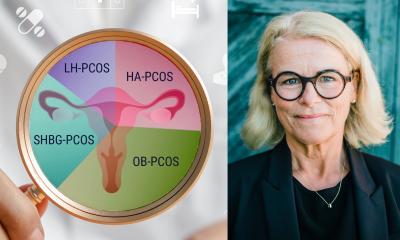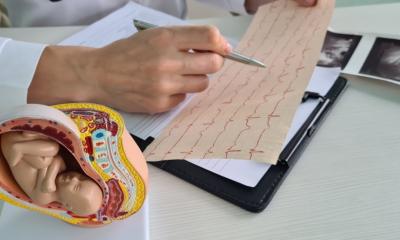Article • Benign tumours
Uterine fibroids: studies indicate high success rate for radiological treatment
Uterine fibroids are the most common benign tumours in women. Treatment is only necessary if the fibroids cause pain and bleeding due to their size and position. Minimally-invasive fibroid embolisation is a gentle, efficient and long-lasting treatment for their removal, leaving the uterus intact. The first evaluations of several international long-term studies have indicated a high success rate for fibroid embolisation.
Report: Karoline Laarmann

We spoke with Professor Stefan Müller-Hülsbeck, Head of Diagnostic and Interventional Radiology/Neuroradiology at the Ev.-Luth. Diakonissenanstalt in Flensburg, Germany, about the technique and the acceptance of this radiological procedure in gynaecology.
Prof Stefan Müller-Hülsbeck: "Fibroids are in themselves not problematic but can impact on women’s quality of life, depending on their size and growth, by leading, for instance, to pressure on neighbouring organs or resulting in heavier periods. Talking about successful therapy therefore involves not so much the volume reduction of the tissue but in the subjective opinion of patients regarding an improvement in, or the complete disappearance of, their symptoms. The studies show that more than 87% of women are happy with the treatment, meaning that patients were happy with the actual treatment as well as the improvement in symptoms (> 81%) and that they would also recommend this procedure to others."
Why has the data evaluation taken so long?
"The gathering of data that can be used for studies is rather difficult. It entails a large logistic effort and commitment. Follow-up examinations are mostly carried out in radiology surgeries (in Germany). Therefore, the hospital that carried out the embolisation doesn’t always have access to the long-term results. Additionally, patients do not always actually attend their follow-up appointments, especially where these involve long journeys. However, you can only talk about long term results if the follow-up observation period is at least three to five years. Also, the size of patient groups is important for meaningful studies. There are now sufficiently large multicentre studies, such as in the USA, with up to 1,278 participants."
What are the advantages of embolisation over other procedures?
Ablation may be the gentlest procedure for the patient, but it is also very sophisticated from a technological aspect and the ultrasound energy can only be used in a very limited way
Stefan Müller-Hülsbeck
"Although the two standard surgical procedures, i.e. hysterectomy and myomectomy (removal of the fibroid) are also becoming gentler, these interventions still bear all the risks involved in any type of surgery. However, fibroid embolisation requires only local anaesthetic and the patient can leave hospital within a day or two. Recuperation then only takes a few days, as well.
There is now another very new non-invasive procedure – focused ultrasound under MRI control. Ablation may be the gentlest procedure for the patient, but it is also very sophisticated from a technological aspect and the ultrasound energy can only be used in a very limited way, i.e. the fibroid has to be in a favourable position and cannot be too vascularised. In fibroid embolisation the degree of vascularisation is not important."
Why are hysterectomies frequently carried out, rather than fibroid embolisation?
"Hysterectomy definitely makes sense in certain cases, but is not always necessary. The problem is that the gynaecologists who make the diagnosis and decide on the treatment procedure are often not well informed enough. But, in many cases, it is in fact only the gynaecologist who decides on the treatment to be used. This is why it’s not only important to inform patients in ‘fibroid surgeries’, but also to inform doctors about the alternative radiological procedures on offer. An individual therapy decision, customised to the needs and anatomic individualities of each patient, can only be reached through very good cooperation between interventional radiologists and gynaecologists. This is something we have to work on."
Fibroid embolisation: the technique
A catheter is inserted through the groin and guided to the right and left main uterine artery under radiological control. Small particles are injected through the catheter, which then collect in the vascular network of the fibroid, eventually cutting off blood supply. The normal uterine tissue is not affected and maintains its blood supply. Within 3-6 months the fibroids shrink to about half their initial size, as the body transforms the devascularised tissue into scar tissue.
01.03.2009











